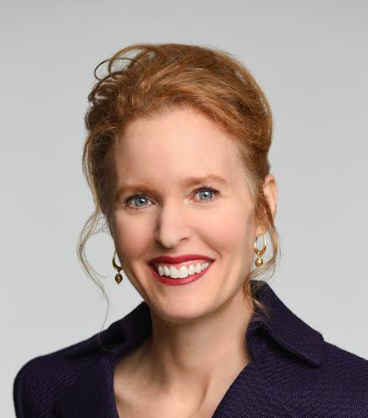
If one thing is increasingly clear from this COVID-19 era, it’s that countless millions of Americans – and even more global citizens elsewhere – will grow poorer from it. And this matters immensely for climate change.
Why? First, remember that climate action embodies two halves: mitigation of greenhouse gas emissions and adaptation to physical impacts. Poverty relates to each in very different ways.
Take climate change mitigation and how it relates to poverty. Mitigation actions include enhanced energy efficiency, especially in industrial, commercial and multifamily properties, utility-scale renewable energy and public transit investments. If done well and with intensity, all of these down the road will diminish climate change impacts on poor people and – and all people.
Of course, if you first want to explore how to decrease poverty while increasing climate change mitigation, you might focus on distributed energy generation in poorer neighborhoods; jobs for the poor in renewable energy; and public transit to employment, day care and school. Yet, as many investors will maintain, these initiatives may deliver less impact dollar for dollar on greenhouse gas reductions than would utility-scale renewables, transit infrastructure, and commercial and industrial energy efficiency.
Thus, the intersection of poverty reduction and greenhouse gas reduction may be less of a priority for the market.
COVID-19 exacerbates three huge climate change risks
So, pivoting to climate change adaptation – i.e., decreasing physical risk – how does it relate to poverty in America? Risk has three components: hazard, exposure and vulnerability. As for hazard, whether you’re poor or rich, each of us faces the same climate change peril. That is, the same scorching heat, sea level rise and wildfires.
As for exposure, those who live in harm’s way – along coasts or rivers or in the wildfire/urban interface – are more exposed to these hazards. To be sure, as a global recession strikes, there might theoretically be a decrease in climate change exposure, as demand declines for new housing along the flood-prone coasts and rivers or in wetlands and marshes. This also may stem the tide of older people continuing to move to the coast to live out their retirement dreams. Poverty has a way of quashing those aspirations.
The biggest intersection of physical climate change impact and poverty is vulnerability. That’s because the poorer you are, the higher your vulnerability – to most anything. When you lose your house or car in a flood or fire, you have fewer resources for alternate housing or transportation, when your asthma increases with extreme heat, you have less funds for medical care, when food prices go up due to drought, your purchasing power goes down. In the case of climate change risk, vulnerability separates the rich from the poor and illuminates the disproportionate impact of loss.
While the mitigation of greenhouse gas emissions has been a “nice to do” to involve the poor in job creation adaptation to climate change is a “must do.” We must focus on poverty alleviation and serving poorer neighborhoods as the priority of climate adaptation, or the result be even more profound suffering.
What must we do?
First, focus climate change adaptation on poor neighborhoods along the coasts and rivers’ edge, improving infrastructure and establishing the means and mechanisms for poor families to move out of harm’s way. And lest you think flooding is an issue for another time, consider that by 2050, U.S. coastal floods previously expected once every half century will occur almost every year in many areas.
Next, cool cities and neighborhoods to decrease deadly pockets of extreme heat (a.k.a. urban heat islands). Ensure that the poor have access to reliable air conditioning and the ability to pay electric bills. The urban heat island effect is predicted to increase heat by half. So, when temperatures rise 2 degrees Celsius (3.6F), city heat could rise 3 degrees Celcius (5.4F).
Finally, focus public health in poor neighborhoods to ensure that fewer people suffer from debilitating cardiopulmonary illnesses such as COPD and asthma, which become more dangerous as temperatures rise. Today under 10,000 Americans die from extreme heat each year. The federal Global Change Research Program estimates that the number of Americans who die annually from extreme heat will almost double by 2050 from the present number approaching 10,000. For high heat states like California, Florida and Louisiana, among other, climate change is expected to increase death rates by between 3.5-4%, particularly among the poor, by the end of the century.
The environmental and social impacts of COVID-19 will linger a long time
And while COVID-19 has tragically taken over 60,000 Americans’ lives, with startling percentages being lower-income Americans, estimates of future climate change deaths are also sobering. More poor Americans will die from rising temperatures and the increased frequency, intensity and duration of coastal storms. Around the world, unless climate change adaptation focuses on the poor, a tragic rise in deaths will occur from malnutrition, vector-borne disease, extreme heat exacerbating chronic illness, extreme weather-caused disruptions to health service and food supply, and deaths of despair as outdoor labor productivity plummets.
As poor Americans grow poorer in the post-COVID-19 era, this creates a priority to act on climate adaptation. If we choose to be agnostic about income levels in climate change adaptation in the same way we are in climate change mitigation, millions more Americans in the coming decade will not only be poor, they’ll be dead.
The post-coronavirus economic environment will demand extraordinary leadership from all sectors. In your climate action strategies, remember the poor.
Image credit: Victor He/Unsplash

Joyce Coffee, LEED AP, is founder and President of Climate Resilience Consulting. She is an accomplished organizational strategist and visionary leader with over 25 years of domestic and international experience in the corporate, government and non-profit sectors implementing resilience and sustainability strategies, management systems, performance measurement, partnerships, benchmarking and reporting.














